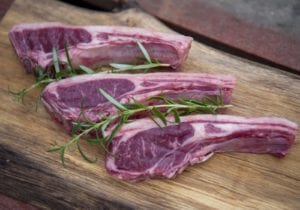

During any 1 stealing bout, squirrels steal 1–25 cones. 1993 Hatt 1929 C C Smith 1968), as red squirrels steal cones directly from the middens of other squirrels or while other squirrels are harvesting and dropping cones to the ground (F. However, pilfering does occur ( Boutin et al. Red squirrels are territorial and vigorously defend their territories against conspecifics ( Gurnell 1987 Rusch and Reeder 1978 Smith 1981). Thus, the only competitors that red squirrels can defend against are other red squirrels. Once conifer cones are cached, they generally are not eaten by other species, except small, invertebrate seed predators and large omnivores such as grizzly bears ( Mattson and Reinhart 1997 C C Smith 1968, 1981). However, seeds, especially conifer seeds, are the critical food resource determining overwinter survival, and red squirrels cache numerous conifer cones for sustenance during the winter ( Gurnell 1987 Kemp and Keith 1970 C C Smith 1968, 1981). In this study, I measured pilfering rates in larder-hoarding red squirrels ( Tamiasciurus hudsonicus), Red squirrels consume a wide variety of foods ( Gurnell 1987 Layne 1954 Smith 1981). Larder hoards, on the other hand, are thought to be limited to those animals that can effectively defend their caches against pilfering ( Smith and Reichman 1984 Vander Wall 1990) however, little is known about the occurrence of pilfering in larder hoarders (but see Daly et al. 1995 Lahti and Rytkönen 1996 Stapanian and Smith 1978, 1984 Wauters et al. 1992 James and Verbeek 1983 Jenkins and Peters 1992 Jenkins et al. Animals that cache foods that are difficult to defend typically scatter hoard, and the threat of pilfering plays an important role in determining the spatial distribution of their caches ( Clarke and Kramer 1994a, 1994b Clarkson et al. The use of any 1 strategy should increase the probability that the individual creating a cache recovers more of the food than alternative strategies ( Andersson and Krebs 1978 Smith and Reichman 1984 Stapanian and Smith 1978 Vander Wall 1990 Vander Wall and Jenkins 2003).

The evolution of these hoarding strategies is thought to depend on the abilities of individuals to defend their caches against pilfering.

In contrast, larder hoarders cache all or most of then-food in 1 or a few centrally located caches or middens. Scatter hoarders typically place 1 or a few food items in many small, scattered caches. Food-hoarding strategies span a continuum from highly dispersed (scatter hoards) to highly clumped (larder hoards). Pilfering, which occurs when 1 individual steals food harvested or cached by another individual, is thought to play an important role in the evolution of different hoarding strategies ( Andersson and Krebs 1978 Stapanian and Smith 1978 Vander Wall 1990 Vander Wall and Jenkins 2003). Loss of cached foods is a constant threat to animals that hoard food. Thus, pilfering likely plays an important role in shaping the hoarding and defensive behaviors of larder-hoarding animals.įood hoarding, larder hoarding, middens, pilfering, red squirrels, Tamiasciurus hudsonicus, territory quality Because food is frequently a limiting resource for red squirrels, these changes in food abundance may directly affect the fitness of individual squirrels. Squirrels with small middens, however, ultimately gained cones, and those with large middens lost cones. Numbers of cones gained by and lost to stealing were not related to the age or sex of individual squirrels or the distances between or numbers of cones cached in individual territories. However, individual squirrels stole 1–100% of the cones that they ate and lost 1–84% of the cones cached in their middens. Most squirrels stole cones (97%) and lost cones to stealing (92%). Red squirrels stole 26% of the cones that they ate and lost 25% of the cones cached in their middens.

In this study, I used a mark-recapture study of cached Norway spruce ( Picea abies) cones to quantify pilfering rates in larder-hoarding red squirrels ( Tamiasciurus hudsonicus). Although pilfering is known to affect the behavior of scatter hoarders, pilfering has been assumed to be less important for larder-hoarding animals. Loss of cached foods is a constant threat to animals that hoard food, and pilfering plays an important role in the evolution of hoarding strategies.


 0 kommentar(er)
0 kommentar(er)
